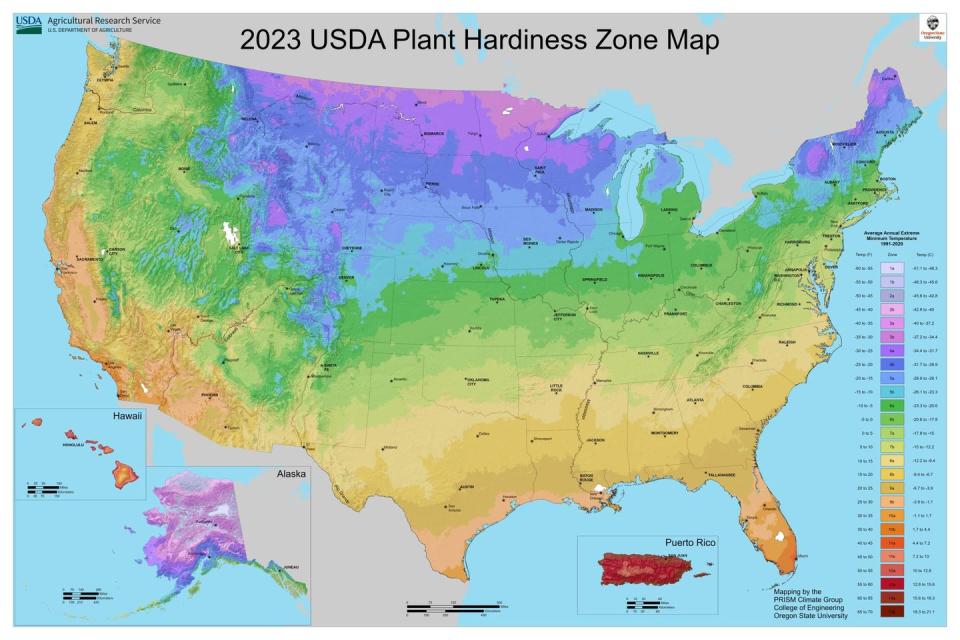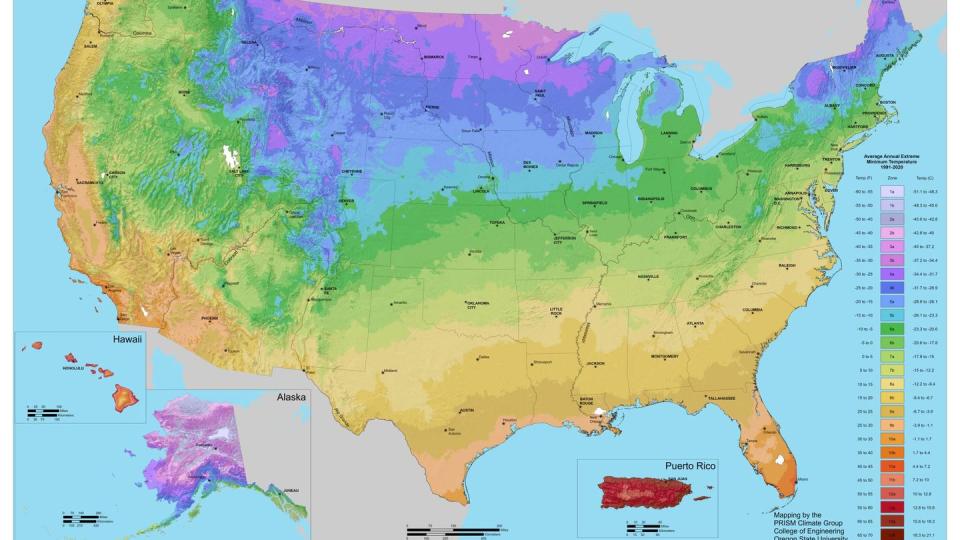The USDA Plant Hardiness Zone Map Just Changed for the First Time in Over 10 Years
The first day of spring will be here before you know it! And for green thumbs, that means planning and starting your seasonal garden. But before you buy your seeds, there's some very important information you must know: The USDA just updated their plant hardiness zone map for the first time since 2012, and there have been some major changes.
For those of you who are just starting out or only dabble in plants, the USDA creates a 13-zone map to be "the standard by which gardeners and growers can determine which plants are most likely to thrive at a location." It can be a handy resource, particularly for perennials, because it advises the average lowest winter temperature over a specified time, which is crucial to the survival of plants.

According to the new map released in November 2023, about half of the United States has shifted to a new hardiness zone. That's really big news if you consider 80 million Americans use this map to decide on what and when to grow! Simply put, the types of plants that are able to grow successfully has changed for 50 percent of the country, according to data collected by over 13,000 weather stations across the U.S.
The good news is the USDA has created an easy-to-use interactive version that's free for everyone. You simply type in your zip code and it gives you zoomed in, color-coded view of your area, complete with what your zone was in 2012 and what it is now. While half of the country remains the same zone as before, it's important to double check your zone regardless, so you know what to plant and when.
The map also includes a link on how to use the map, explaining the other factors besides temperature that can affect plants like light, soil moisture, and humidity. Plus, there are lots of other videos and tips for growers of all kinds, whether you prefer to grow vegetables, flowers, or herbs. So while we all know the weather can be unpredictable regardless of the day or year, using the new map can help set you up for gardening success no matter where you live.
Every day, your garden’s tiniest visitors are hard at work. The lovely little butterflies you see floating by and those always-busy bees are transferring pollen from flower to flower so plants can reproduce to make fruits and seeds. And though you may not have ever thought about it, without our pollinators, there’s no food for any of us. These winged wonders are what keep your vegetable garden thriving! That's why you'll want to check out these plants that attract pollinators, including several spring flowers and more to bring life to your garden.
Unfortunately, in some places, pollinator populations have been affected by misuse of chemicals or habitat destruction. So what's the best thing you can do to help? Plant flowers to make your garden a welcoming place for different kinds of pollinators including bees, moths, wasps, butterflies, and hummingbirds. Make sure to plant in clumps or swaths, rather than one flower here or there, so your visitors will find the wealth. And if you don’t have a big backyard, you can plant them in containers and pots that will also add some variety to your landscaping ideas! Finally, if you’re planting perennial flowers, which come back for many seasons, make sure they’ll survive winters in your USDA Plant Hardiness Zone.
Now that you know why you should add plants that attract pollinators, here are a few great varieties to add to your garden!
You Might Also Like


